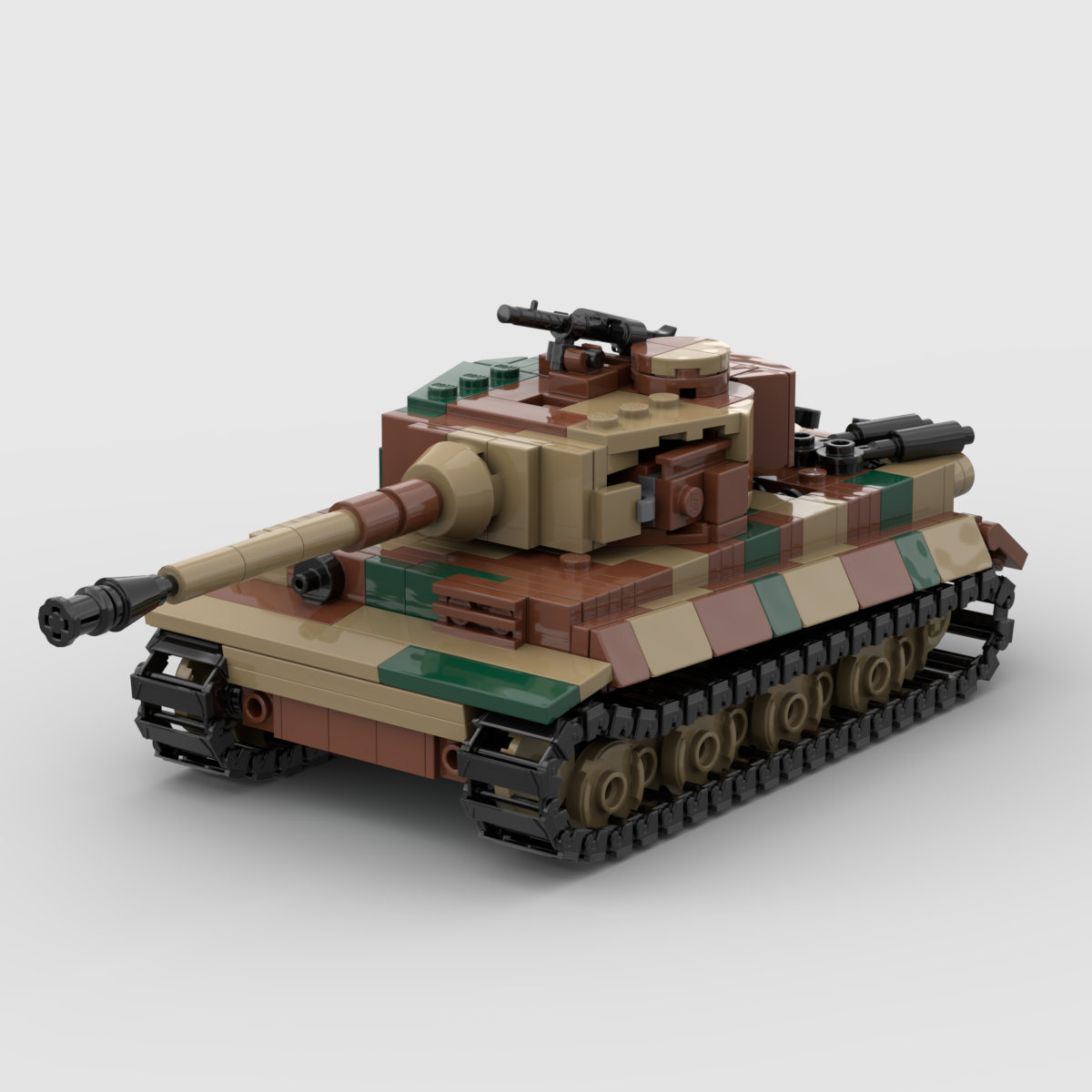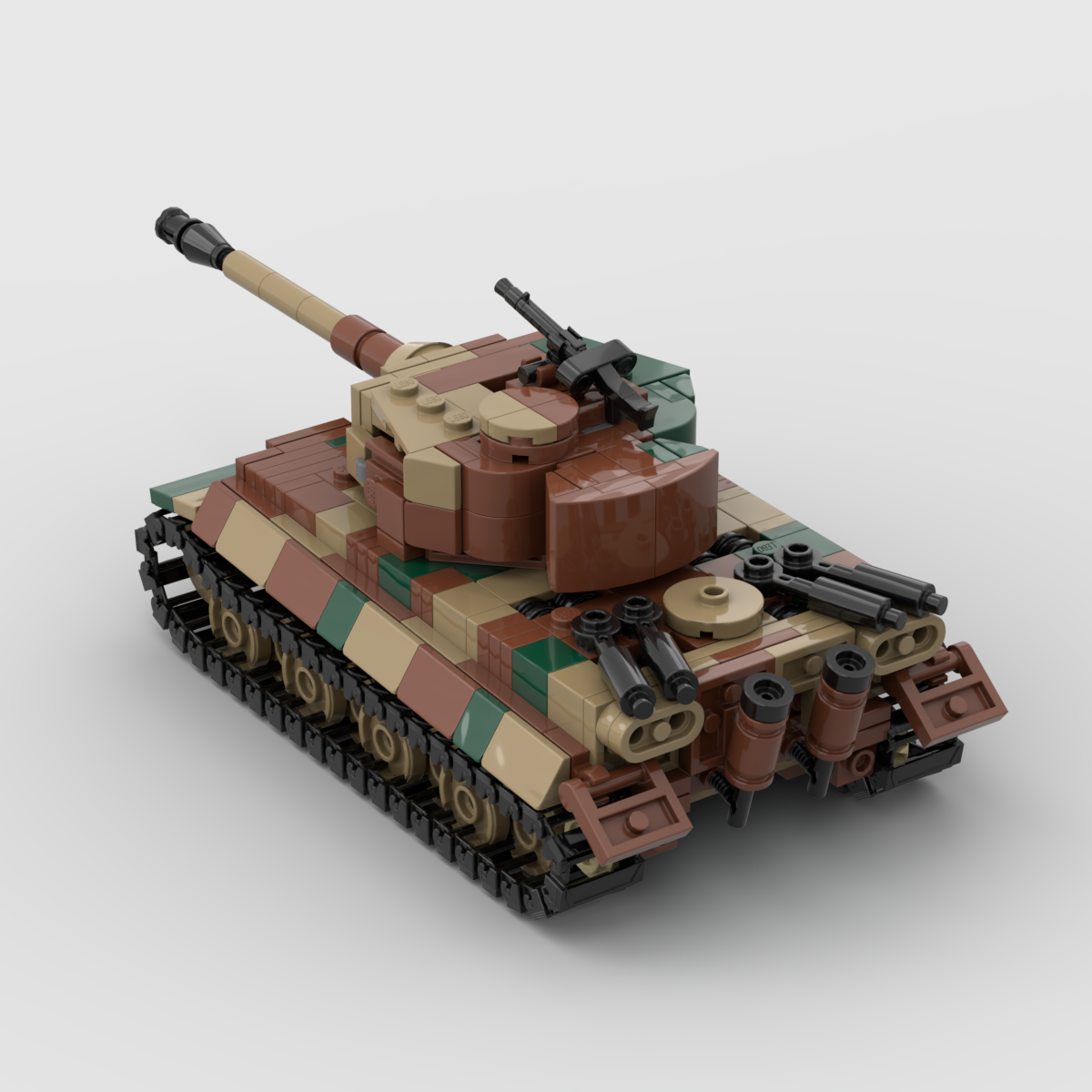Tiger I Ausf. E Instruction
Tiger I Ausf. E Instruction
Couldn't load pickup availability
About the Model
- You are buying PDF INSTRUCTIONS only
- XML part list (can be uploaded o Bricklink®)
- Build in 1:45 Scale
- Skill: 4/5
- Requires 521 LEGO®, Brickarms® and CustomBricks® elements
- PDF Instructions automatically send via E-Mail after purchase
- Turret is turnable by 360°
History
The Tiger I Ausf. E is one of the most famous and feared tanks of World War II, known for its formidable
firepower, heavy armor, and intimidating presence on the battlefield. Developed by Königlich Bayerische
Maschinenfabrik(K.B.M.) and introduced in 1942, the Tiger I was the first operational German heavy tank to
combine advanced armor protection with a powerful long-range weapon, fundamentally changing armored
warfare tactics.
The Tiger I Ausf. E was armed with the 8.8 cm KwK 36 L/56 gun, a high-velocity cannon capable of
penetrating up to 100 mm of armor at 1,000 meters. This weapon made the Tiger I one of the most effective
tank killers of the war, capable of engaging and destroying any Allied tank at long ranges. The firepower was
complemented by a secondary 7.92 mm MG34 machine gun for anti-infantry defense, which was mounted on
the turret.
What set the Tiger I apart from other tanks was its exceptionally thick armor, which ranged from 80 mm to
100 mm on the front and turret, offering unparalleled protection against most contemporary Allied anti-tank
weapons. The thick, sloped armor made the Tiger I highly resistant to enemy fire, allowing it to dominate the
battlefield in terms of survivability. However, the weight of the armor, combined with its Maybach HL 210
P45 engine, which produced 650 horsepower, limited its mobility to a top speed of 38 km/h (24 mph), which
was slower than lighter tanks.
Despite its heavy armor and superior firepower, the Tiger I suffered from several logistical challenges, such as
high fuel consumption, mechanical breakdowns, and the need for frequent maintenance. These limitations,
along with the difficulty of mass production, led to a relatively low number of units produced—only
about 1,350 Tiger I tanks were built by the end of the war.
The Tiger I Ausf. E saw action in key battles across both the Eastern and Western Fronts, including Kursk,
the Battle of Normandy, and the Battle of the Bulge. Its combination of powerful gun and near-impenetrable
armor made it a terror for Allied tank crews and infantry, although its slow speed and mechanical
vulnerabilities meant that it was not invincible. Despite these limitations, the Tiger I played a crucial role in
the German Panzer divisions, especially in counterattacks and as a spearhead for armored operations.
The legacy of the Tiger I endures as one of the most iconic tanks of World War II, both feared by the enemy and
admired by tank enthusiasts and military historians for its engineering achievements. Its influence can be seen
in the development of future tank designs, particularly the Tiger II and other heavy tanks of the post-war era.
Today, the Tiger I continues to be studied and preserved by military museums and restoration projects around
the world, symbolizing the peak of German armored warfare during the Second World War.
Share





